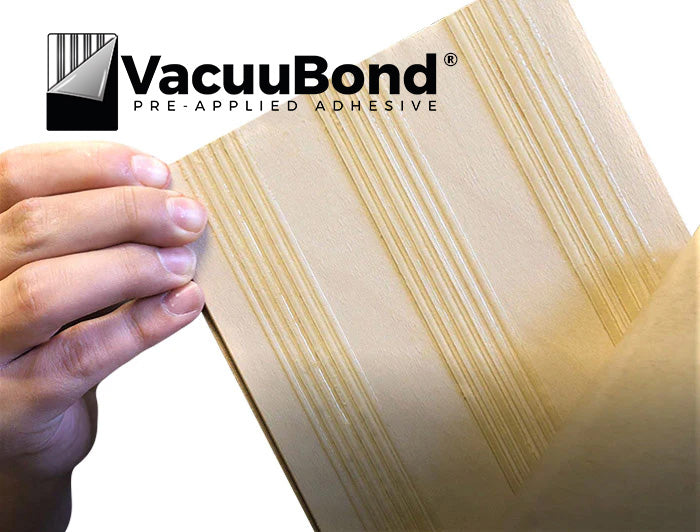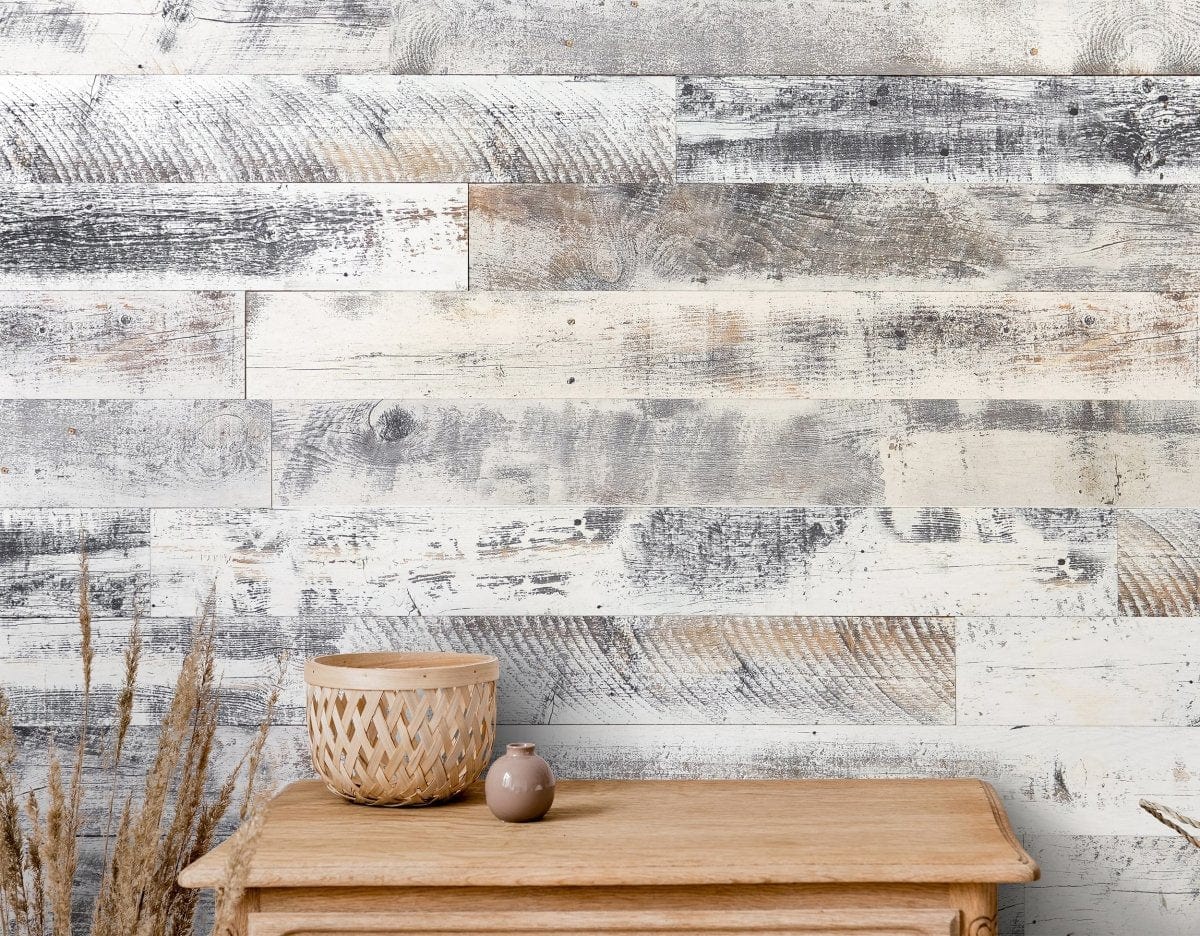Your Cart is Empty
Get your first 3 samples FREE! Use code: 3FREESAMPLES at checkout!
Get your first 3 samples FREE! Use code: 3FREESAMPLES at checkout!
Shop Products
What's Trending
Resources
Wallplanks® Blogs
The Best Top Coat Wood Finish
Pre-Applied Adhesive
Wallplanks® Blogs

View Blogs >
The Best Top Coat Wood Finish

Read More >
Pre-Applied Adhesive

Read More >
The Evolution of Wall Paneling: From Classic to Contemporary Designs
June 05, 2025 5 min read

Interior design is a constantly evolving landscape where style meets function to reflect the character and aspirations of a home's inhabitants. Among the many transformative elements in interior décor,wall paneling styles stand out for their dual role: both aesthetic and architectural. From the intricate detailing of colonial wainscoting to the sleek sophistication of modern 3D textures, wall paneling has evolved significantly over time.
Classic Versus Contemporary Paneling
Historical Influences on Paneling
The roots of wall paneling date back centuries and are embedded in the architectural traditions of Europe and early America. In their earliest iterations, wall panels were primarily functional, offering insulation and protection in large stone or timber-framed homes. However, over time, they became a sign of status and craftsmanship.
-
Wainscoting: Originating in 16th-century England, this form of paneling was typically made of oak and installed on the lower third of walls. It protected from scuffs while adding elegance with decorative molding.
-
Beadboard: Popular in Victorian-era cottages, beadboard featured narrow vertical planks with subtle ridges ("beads") between them. This created texture while offering durability.
-
Raised and Flat Panels: These paneling styles were hallmarks of Georgian and Colonial American homes. They were symmetrical, formal, and often painted in subdued tones.
Classic paneling emphasized detail, symmetry, and craftsmanship. It was about creating rhythm and architectural interest in otherwise plain rooms. These styles remain in use today, especially in heritage renovations and homes seeking a timeless aesthetic.
Contemporary Innovations
Fast-forward to the 21st century, and wall paneling has been reimagined through the lens of minimalism, industrial design, and sustainability. Contemporary wall paneling emphasizes simplicity, bold textures, and ease of installation.
-
Shiplap: Once used in barns and sheds, shiplap became an interior design staple thanks to its clean lines and rustic charm. It's particularly popular in farmhouse and coastal interiors.
-
3D Textured Panels: These ultra-modern designs feature waves, geometric patterns, or organic textures that create dynamic visual interest without heavy ornamentation.
-
Mixed Materials: Contemporary styles incorporate reclaimed wood, metal, composite boards, and even eco-friendly laminates, offering durability and variety.
The transition from ornate to streamlined reflects broader cultural shifts toward functionality, sustainability, and personalization. Today's wall paneling styles offer the best of both worlds: the warmth of wood with the clean edge of modernism.
Key Trends in Wall Panel Design
As wall paneling evolves, new trends continue to redefine what's possible in residential and commercial interiors. The following are key directions shaping the future of this versatile design element.
Modern Materials and Finishes
One of the most significant advancements in wall paneling lies in the innovation of materials and finishes. Modern homeowners are not limited to traditional wood; today's options expand the range of aesthetic and functional possibilities.
-
Engineered Wood: More dimensionally stable than solid wood, engineered planks resist warping and are often pre-finished for convenience.
-
Peel-and-Stick Systems: Designed for easy DIY installation, peel-and-stick panels allow homeowners to dramatically change a space without hiring contractors.
-
Sustainable Sources: With growing awareness of environmental responsibility, many paneling products are now made from recycled or responsibly harvested materials.
Finishes have also diversified:
-
High-gloss and matte options cater to different aesthetic preferences.
-
Textured finishes add depth and complexity.
-
Weathered and distressed looks bring authenticity to rustic and industrial interiors.
Bold Colors and Pattern Play
Gone are the days when paneling had to be white or wood-toned. Today's designers are embracing color in exciting ways:
-
Deep Navy, Emerald, and Charcoal hues add mood and luxury.
-
Color-blocking with panels in contrasting shades makes a striking statement.
-
Patterned panels in herringbone or chevron layouts add movement and sophistication.
These innovations enable homeowners to personalize their spaces more than ever before.
Vertical Versus Horizontal Orientation
While classic styles often emphasized vertical lines (as with beadboard), modern designs play more with orientation:
-
Horizontal panels can elongate a room visually.
-
Diagonal installations create a sense of movement and artistic flair.
-
Mixed orientations on a single wall can become a dramatic focal point.
Orientation is no longer just a structural choice—it's a powerful design tool.
How to Choose a Style for Your Home
With so many options available, selecting the right wall paneling style can feel overwhelming. However, by aligning your choices with architectural context, lifestyle needs, and personal aesthetics, you can make a confident and inspired decision.
Consider Your Home's Architecture
Start by evaluating your home's architectural bones. Is it a Victorian-era home with ornate moldings? Or a mid-century modern structure with open spaces and clean lines?
-
Traditional Homes: Raised panels, wainscoting, and beadboard will preserve historical integrity while enhancing elegance.
-
Modern Homes: Sleek, flat panels or geometric 3D textures will amplify the home's contemporary spirit.
-
Farmhouse or Rustic Styles: Shiplap, reclaimed wood, and distressed finishes offer character and warmth.
Respecting the home's original design helps create cohesion and avoids stylistic dissonance.
Evaluate the Function of the Space
Different rooms have different needs. A mudroom may require durability and moisture resistance, while a living room may call for aesthetic appeal.
-
Bathrooms and Kitchens: Look for water-resistant materials like engineered or laminate panels.
-
Bedrooms: Create a cozy atmosphere with soft textures and warm finishes.
-
Living Spaces: Use paneling to build focal points, such as behind a TV or fireplace wall.
Function should inform form, ensuring the style adds beauty without compromising practicality.
Reflect Your Personality
Finally, your personal style matters most. Are you drawn to crisp, clean lines or organic, natural textures? Do you want your space to feel serene, luxurious, rustic, or bold?
Wall paneling offers a unique canvas for self-expression:
-
Mix classic and modern elements to tell a layered story.
-
Use lighting to accentuate textures and shadows.
-
Accessorize with art, plants, or shelves to further individualize the space.
Case Studies and Design Inspirations
Real-world examples provide valuable insight into how different paneling styles function and flourish in various settings.
Case Study 1: Classic Revival in a Colonial Home
A family in New England renovated their 19th-century colonial with a nod to the past. They installed traditional raised-panel wainscoting in the dining room and coffered ceilings in the study. By painting the panels a soft dove gray, they updated the look while retaining historical elegance. The result? A seamless blend of old-world charm and contemporary comfort.
Case Study 2: Modern Minimalism in an Urban Loft
In a Chicago loft, a young couple installed matte black 3D wall panels behind their bed. The wave-like texture added drama without overwhelming the minimalist décor. Paired with industrial lighting and neutral bedding, the wall became a statement piece that defined the space.
Case Study 3: Rustic Elegance in a Mountain Retreat
A cabin in Colorado was transformed using wide-plank shiplap in a reclaimed wood finish. Installed floor-to-ceiling in the living room, the paneling provided warmth, texture, and a sense of place. The homeowners complemented it with leather furniture, antler light fixtures, and woven textiles for a cohesive rustic-luxe aesthetic.
These examples show that no matter your style, wall paneling can elevate a room from ordinary to unforgettable.
Transform Your Walls with Wallplanks
Wall paneling styles have come a long way—from ornate hand-carved panels in historic mansions to sleek, modern textures that can be installed easily. But at their core, panels still serve the same purpose: to add character, beauty, and dimension to our spaces.
If you're ready to reimagine your walls, look no further thanWallplanks. Based in Weston, Wisconsin, Wallplanks was founded in 2017 by industry expertTryggvi Magnusson with a vision: to developdurable, beautiful, and high-performing wall products that are accessible and transformative. Our wall paneling solutions are manufactured byFrom the Forest, LLC, a premium hardwood flooring company with a track record of excellence since 2007.
We are proud to say that all of our materials aresourced in North America and crafted with an unwavering commitment to sustainability and quality. Whether you love the rustic charm of reclaimed wood or the modern allure of textured panels, Wallplanks offers something for every taste and every room.
Explore our collection and discover how easy it is to bring your vision to life. Your walls are waiting.

